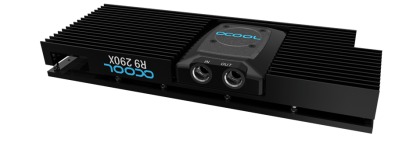I have a 'EK-VGA Supremacy' universal GPU waterblock. For those that don't know, it just cools the GPU die and you have to add heatsinks onto the memory and mosfets separately. I currently have this setup with my 5700 XT, some copper heatsinks and a 140mm low profile fan blowing onto the heatsinks for additional cooling (mounted onto a part I 3D printed).

The system is silent and cools really well, so I'm happy with the process. Some people may say "why bother! Just buy a full cover block", but I love to tinker with things which is why I went this route before. I think its time to upgrade the GPU, but I don't know whether universal GPU blocks are even feasible now or in the near future.
What are peoples thoughts on...
The system is silent and cools really well, so I'm happy with the process. Some people may say "why bother! Just buy a full cover block", but I love to tinker with things which is why I went this route before. I think its time to upgrade the GPU, but I don't know whether universal GPU blocks are even feasible now or in the near future.
What are peoples thoughts on...
- Multichip dies: Is it possible without breaking the die? Has anyone tried it on the 7000 series, radeon 7 or Vega?
- Memory and mosfets: They keep getting hotter and hotter. I'm not sure if a small heatsink and a low speed fan will do the job these days or in the near future.



